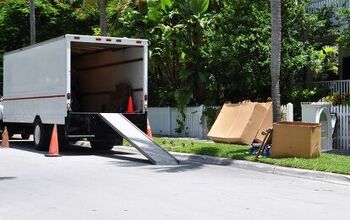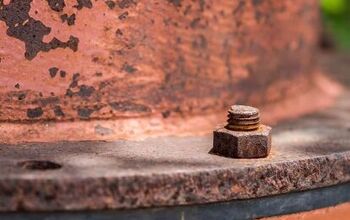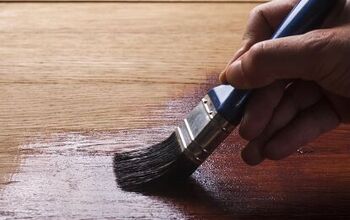How To Remove Broken Threaded PVC Pipe (3 Ways To Do It!)

Accidents can happen while you’re making repairs in and around your home. Every now and then, the accident may involve a pipe breaking before you can remove or install it properly. Getting rid of that broken pipe will be even tougher if it’s threaded.
Do note though that there are effective methods of removing broken threaded PVC pipes. You can even use different tools to get the job done.
A special tool known as a Pipe Debonder can be used to extract threaded PVC pipes that have broken in place. Using heat is another effective way to remove a threaded PVC pipe that is currently stuck. Homeowners can also go for some more old-fashioned fixes that rely on hammers and chisels.
Dealing with a broken threaded PVC pipe can be very annoying if you don’t know what you’re doing. Learn how to tackle that problem better by reading through this article.
We recommend that you also learn How To Protect PVC Pipe From Sunlight.
Do You Need to Hire a Plumber?
Get free, zero-commitment quotes from pro contractors near you.

3 Different Methods of Removing Broken Threaded PVC Pipes
Homeowners can go about removing broken PVC pipes in a variety of ways. We’ve detailed some of the best methods to use below.
Method 1: Removing the PVC Pipes Using a Pipe Debonder
A relatively new tool known as a Pipe Debonder can be used whenever you need to extract a broken PVC pipe. Pipe Debonders rely mainly on heat in order to remove the broken pipe.
There are some notable advantages to using a Pipe Debonder. For starters, it’s very easy to use. The Pipe Debonder will do almost all of the work for you. Furthermore, a Pipe Debonder also comes with all the tools needed for extraction. You won’t have to make additional purchases.
A Pipe Debonder can also be used on other fittings and valves that are glued together. The aforementioned tool can also preserve those fittings and valves better. On the flipside, a Pipe Debonder can be very expensive. You may have a hard time justifying the purchase when other tools can also be used to extract broken pipes.
Step 1: Choose the Correct Settings for the Pipe Debonder
To get started, input the right configurations into your Pipe Debonder. Note the size of the PVC pipe as well as its thickness.
Step 2: Put the Pipe Debonder in Place
Place the Pipe Debonder as close as you can to the PVC pipe you want to remove. Check to see if the Pipe Debonder is fully in contact with the target pipe. You can let it start working once it’s in the right position.
Step 3: Hold the Pipe Debonder
The next step is the toughest part because you must hold the Pipe Debonder for a long period of time. We’re talking something close to 10 minutes here.
You will also have to do your best to remain still. Moving the Pipe Debonder around too much could cause some spots to burn. Also, consider wearing gloves to make handling the Pipe Debonder easier. It can get quite warm so protect yourself accordingly.
Step 4: Use the Included Tool to Extract the PVC Pipe
Now that the PVC pipe has been suitably warmed, you should be able to extract it easily. Grab the tool included with the Pipe Debonder and use that to remove the PVC pipe. Twist the tool around in order to get the PVC pipe out of position.
Method 2: Removing the PVC Pipe Using Paint Primer and a Blowtorch
The Pipe Debonder utilizes heat to remove the PVC pipe. However, there are other ways to let the heat help you if you want to remove a broken pipe. Paint primer and a blowtorch can also work well for removing broken PVC pipes. Let’s go over how to use those items below.
Step 1: Set Up a Workstation Outside
Burning a material such as PVC indoors can be hazardous to your health. Before you set anything ablaze, head outside and set up a workstation there. All you really need for this task is a small table set up in an open area.
Step 2: Apply the Paint Primer
The paint primer usually comes with a small brush that you can use to apply it. Use that small brush to apply a thick coating of the primer onto the surface of the PVC pipe. Apply multiple coatings if needed.
Step 3: Wipe Off the Excess Paint Primer on the Other Surfaces
During application, you may have gotten some of the primer onto a portion of the pipe you don’t want to remove. That can be a problem as those parts may catch fire as well. Grab a towel and use that to clean those other surfaces.
You should also wipe the table you’re using clean. Any excess primer on the table could catch fire too and that could cause a huge problem.
Step 4: Set the PVC Pipe on Fire
With the primer applied, you can now ignite the PVC pipe using the blowtorch. Set the ignited PVC pipe back down on the table and make sure nothing nearby can catch fire.
Step 5: Wait for the Fire to Die Down
Now, you will have to wait for the fire to die down. That will happen after a few minutes or so. Don’t proceed to the next step until the fire is completely out.
Step 6: Apply Another Layer of Paint Primer
After double-checking to see that the fire is out, you can start applying another layer of primer. The single burn may not be enough to dislodge the PVC pipe from its stuck state. You need to reapply the primer to make the PVC pipe easier to remove.
Once you’ve reapplied the primer, you can set the pipe on fire again with your blowtorch. From there, just wait until the fire dies down once more.
Step 7: Use a Screwdriver to Extract the PVC Pipe
The fire should have done enough to soften up the PVC pipe. That means you can now remove it using a screwdriver.
Jam a flathead screwdriver between the PVC pipe and the outer covering. Follow that by working the screwdriver like a lever until the PVC pipe is completely removed. You can also use a pair of pliers to remove the PVC pipe if the screwdriver isn’t working.
Method 3: Removing the PVC Pipe Using a Hammer and Chisel
For this last method, we’re going to rely on some household tools and the threads themselves to remove the PVC pipe. The specific tools we’ll be using here are the hammer, chisel, and some pliers.
Step 1: Find a Chisel That Will Fit
The first thing you need to do is to find a chisel that’s appropriately sized for this particular job. A chisel that is too small will not catch onto the walls of the PVC pipe. On the other hand, one that’s too big will not be able to enter the pipe.
Pull out whichever chisels you have and sort through them until you find the right fit. You could also buy one from the hardware store if you don’t have the right type of chisel on hand.
Step 2: Slide the Chisel into Position
Grab the chisel next and position it inside the opening. Try to get it as close to the center as possible so it can grab onto the PVC pipe firmly.
Step 3: Hammer the Chisel into Place
Pick up your hammer now and start striking the chisel. Keep hitting the chisel until you feel it lodge into the broken PVC pipe.
If you’re working with a smaller chisel, hitting it with the blunt side of the hammer can be tricky. Turn the hammer to the side instead and use the broader portion to hit the chisel.
Step 4: Twist the PVC Pipe Loose
You can get your pliers after the chisel catches on to the pipe. Clamp the pliers onto the body of the chisel and start twisting it. Remember to go in the direction that turns the threads loose.
Twisting the PVC pipe loose may require a good amount of grip. Go ahead and put on some gloves if you feel like that will make removing the PVC pipe easier.
Do You Need to Hire a Plumber?
Get free, zero-commitment quotes from pro contractors near you.

Related Questions
What Causes Threaded PVC Pipes to Get Stuck?
Improper installation is typically what causes PVC pipes to get stuck in place. You may have screwed the PVC pipe into place incorrectly.Mineral deposits can also clog the threads that enable the easy removal of PVC pipes. That’s why the PVC pipes that have been in place for a long time are often the hardest to remove. You’re also more likely to break those PVC pipes that have been in one spot for an extended period of time.
Why Should You Avoid Heating PVC Pipes Indoors?
We noted earlier that using heat to manipulate PVC pipes can be dangerous. That’s due in large part to the dioxins that will be released while the PVC is burning. Those dioxins are very hazardous to a person’s health.Even the vapors are dangerous because they contain potential carcinogens. Burning PVC also produces a lot of smoke and that can be difficult to deal with inside an enclosed space.
Related Guides

Gary Evans is passionate about home improvement. He loves finding out how to make improvements in the easiest, most practical, and most affordable ways. Upgrading his home kitchen is one of his ongoing hobbies. Gary is also a long-time content creator and enjoys spending his free time tending to his hydroponic vegetable garden.
More by Gary Evans














![Finishing Basement Without Permit [Is It Really Illegal?]](https://cdn-fastly.upgradedhome.com/media/2023/07/31/9070078/finishing-basement-without-permit-is-it-really-illegal.jpg?size=350x220)












